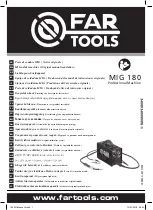
IndeeLift FTS-600 User Manual
Preliminary FTS-600 UM 1-13-2022
Page
12
of
24
Copyright 2022 IndeeLift Inc. All Rights Reserved
Transfer-to-Stand is where the patient needing assistance is in a chair, wheelchair, bed or other seated
position and needs assistance to stand.
Floor-to-Transfer operation is when a patient is lifted from the floor and delivered in a seated position
to a wheelchair, bed or other destination.
Floor-to-Stand is where a person is on the floor and needs to be lifted to a standing position.
Patient transport utilizes previously described methods to transfer the patient onto the FTS. The
patient is transported to the desired destination and is then raised to stand or transferred to
The FTS is equipped with a seat platform that is designed to lock in place for lifts associated with
transfers and unlocks to allow forward rotation when the user is being raised to a standing position.
When the intent is to raise the patient to a standing position, the rotating-seat function is enabled by
moving the seat-lock levers to the rear position enabling the seat to rotate
forward as the user’s
weight is shifted from their buttocks to their feet. The FTS is designed to work effectively for people of
all heights
up to 6’5”
. For example, a person five feet tall will begin to shift their weight to their legs
when the lift reaches a height of 23 inches, where a person that is 6’4” will begin shifting their weight
to their feet when the lift reaches about 27 inches.
The seat rotates forward a maximum of 27 degrees causing the hips and legs to align, gently enabling
the user to stand. The seat does not push the user forward. As the lifted person shifts their weight and
adjusts their feet, the gradual rotation of the seat is all that is required to achieve a standing position.
Once the user is back on their feet, return the seat to
a normal seated height (17”
-
19”) or to
the floor (home) position as normal use dictates and clip the wired remote to one of the rise-
assist handles or brackets for storage.
Always ensure there are no foreign objects below the seat
before
lowering
it to the home position and before tilting the FTS back to an upright position in its stored location!
General FTS Operation:
These are the basic operational steps for using the FTS to lift a person from the floor or a seated
position to a transfer or standing position.
1)
The provider moves the FTS the patient location.
2)
The provider positions the seat one to two inches below the height of the current seated
position to allow the patient to mount the lift via lateral scooting with the assistance of gravity.
3)
Staff assists the patient to scoot laterally onto the FTS
’s mounting ramp
seat.
4)
Once fully seated in the center and to the rear of the FTS
’s
seat, the lever is pressed to the
“Up”
or “Down”
position on the wired remote. The motor engages and smoothly raises or lowers the
seat.
5)
If the patient will transfer to another seated position, the lift is stopped at 20 to 22 inches (51
to 56 cm) above the floor
or 2” (5 cm) above
the height of the receiving seat, whichever is
closer.
6)
Proceed with the transfer. The patient slides from the FTS to the destination seat.










































